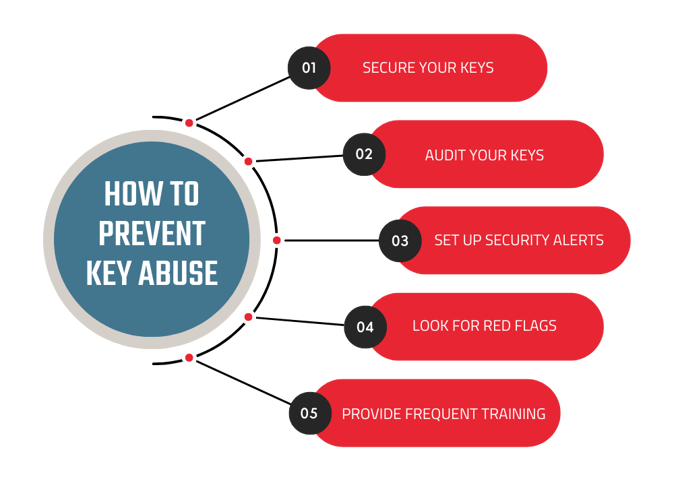People going rogue aren’t uncommon in correctional facilities. But what if the ones behaving erratically are the ones responsible for maintaining order?
Rogue corrections officers are a serious problem. They abuse overtime, facility resources, and inmates alike — and their access to keys could be allowing them to do it. The following four incidents show how dangerous keys in the wrong hands can be.
Corrections Key Control Incidents
1. Corrections Official Helps Capital Murder Suspect Escape
In a case that received national media coverage, a former assistant director of corrections for an Alabama jail ran away with an inmate. The woman removed the inmate from his cell, telling coworkers she was escorting him to an appointment. The officer’s patrol car was later found abandoned in a shopping center parking lot with her jail keys inside.
2. Jail Staff Get Caught Giving Keys to Inmates
Command staff at a Georgia jail sent workers a memo warning them not to give inmates facility keys. The reprimand came amid other allegations of inappropriate behavior, such as selling contraband to inmates. Two employees were arrested.
3. Officer Tries to Sell Handcuff Key
A former corrections officer for an Alabama jail was arrested after he was caught smuggling in contraband — including a handcuff key — which he intended to sell to inmates. The sheriff expressed outrage that the former officer put his fellow employees “in extreme danger” by giving inmates the means to uncuff themselves and attack corrections staff.
4. Inmates Buy Jail Key From Officer and Attack Other Inmates
At an Indiana jail, a former corrections officer allegedly sold keys to two male inmates for $1,000. The men then used the keys to enter the women’s pods, where they attacked more than two dozen victims over the span of two hours. Twenty-eight of those women filed two separate federal lawsuits against the sheriff, the officer who sold the keys, and several other staff who were working the night of the attack. One of the lawsuits accuses the sheriff of a systemic failure, including lack of training, supervision, and security.
How to Prevent Key Abuse in Your Correctional Facility
How do you prevent employees from misusing keys in your own facility? Start with the following steps:
Secure Your Keys
Avoid keeping keys on a pegboard or other easily accessible location. Instead, secure them in a secure key management system that automatically authenticates staff and creates an audit trail of who has keys, when, and why.
Audit Your Keys
No one enjoys key audits, but they’re necessary to account for all keys and see if there’s any suspicious activity. An electronic key management system makes the process quick.
Set Up Security Alerts
Set up email or text alerts so you can be immediately notified if an employee doesn’t return a key on time or takes a key they’re not authorized to have.
Look for Red Flags
Before an officer gets caught in inappropriate behavior, keep an eye out for warning signs. Look for dramatic changes in an officer’s appearance, living beyond their means, and becoming too familiar with certain inmates.
Provide Frequent Training
Effective training helps officers defuse dangerous situations, handle dangerous situations, maintain security, and more. It also sets expectations for appropriate behavior on the job and the consequences for violating policies and procedures.
When corrections officers use keys for unauthorized reasons or willingly hand them over to inmates, you risk the lives of your staff, other inmates, and even the surrounding community. To maintain control of your facility, maintain control of your keys.


